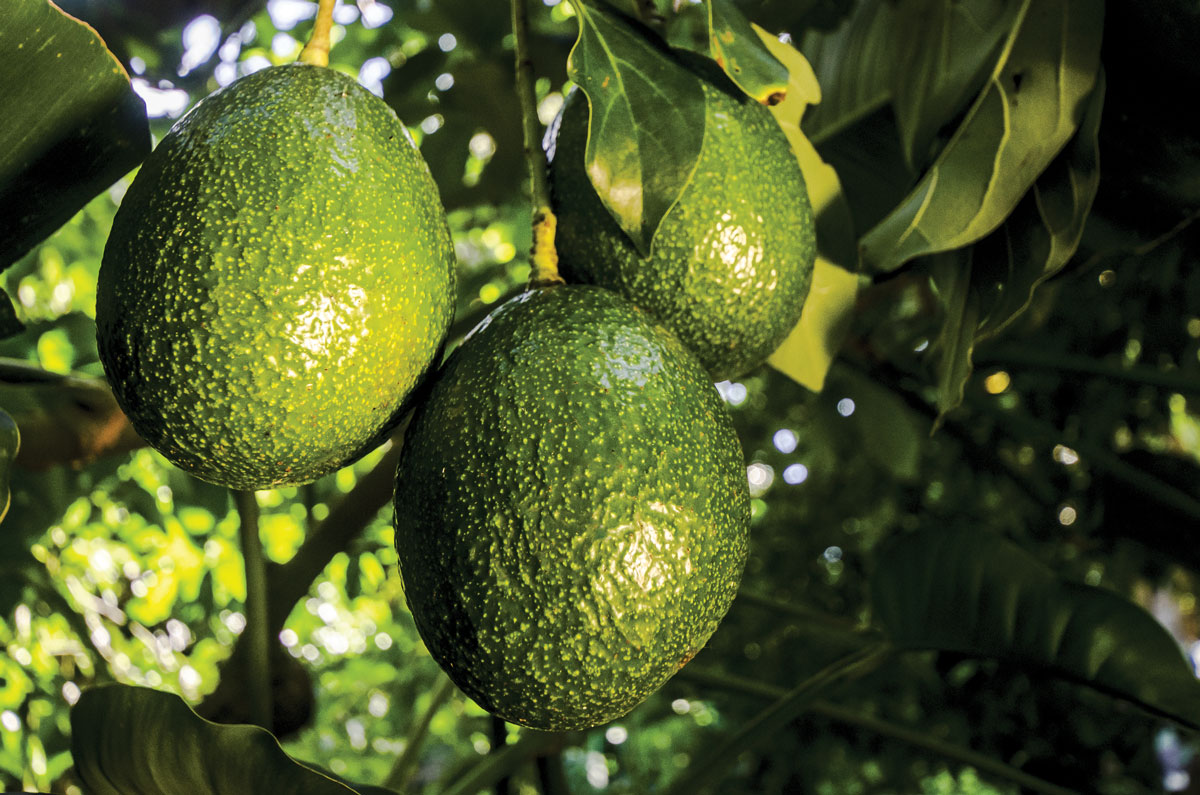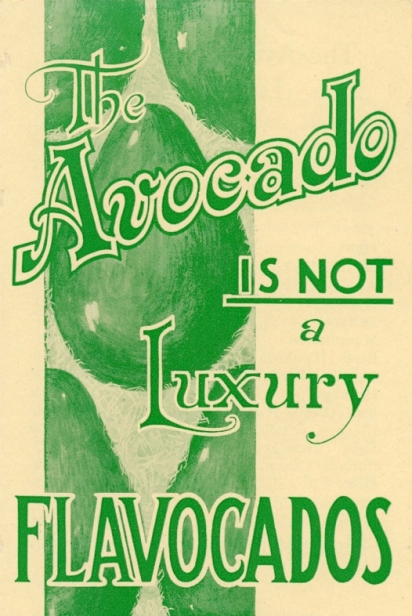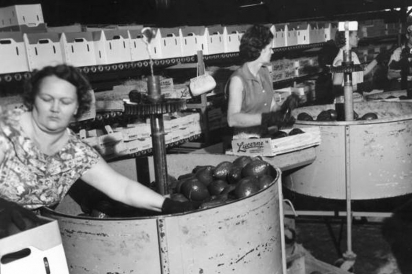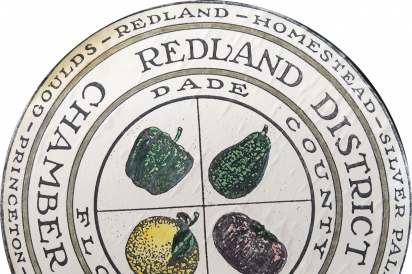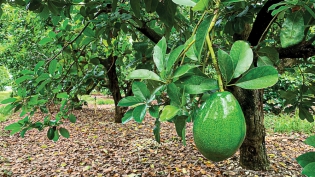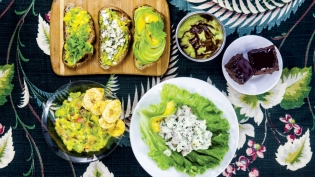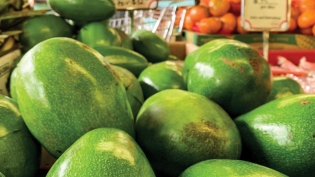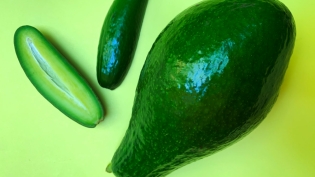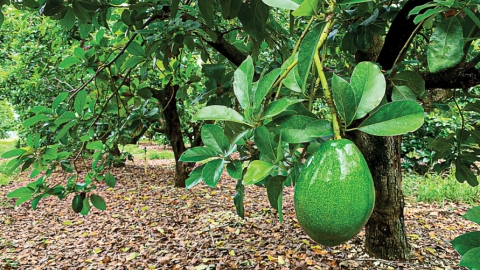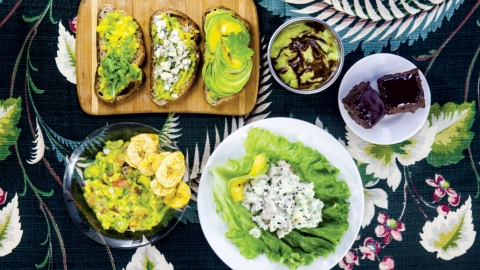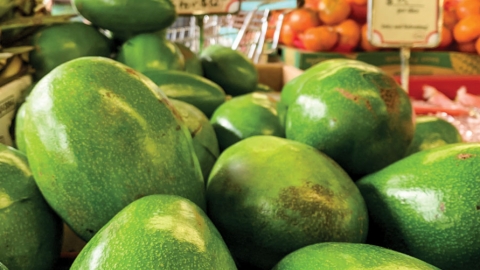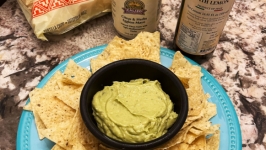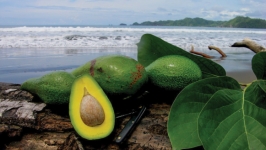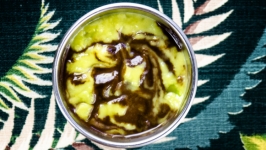The Case for Florida Avocados
“Step outside of the Hass and your comfort zone,” says Charles LaPradd, Miami-Dade agricultural manager. “Florida avocados aren’t boring. There’s a whole palette of different flavors and textures.” And they’re a healthy choice, lower in calories and fat.
Florida’s history with avocado is long and interesting, says Dr. Jonathan Crane of the UF/IFAS Tropical Research and Education Center (TREC) in Homestead. Since pre-Columbian times, avocados have been cultivated in tropical America. In Florida, the first recorded introduction was in 1833. “But when settlers came to South Florida in the mid-1800s, they found avocados growing, probably introduced by indigenous people from the Caribbean,” he says. “It’s been here a long time.”
Avocados in South Miami-Dade
More than 100 years ago, plant experts in South Florida were already grafting avocados at the USDA Miami plant introduction garden on six acres near Brickell. Growers planted seeds from Central America, let the trees flower and cross, then gave the seeds to growers – “very forward-looking,” says Crane. In Reminiscences of Early Plant Introduction in South Florida, plant explorer Dr. David Fairchild mentioned the 30 different varieties of avocado in boxes in the slathouse in 1912, 11 years after George Cellon first budded the Trapp avocado and put it on the market. He writes: “I look back to those early days of the great avocado industry with pleasure for they were days of excitement and surprise, and while we may not have appreciated quite fully the importance of the events taking place around us, for no young people do, we certainly were active in our search for avocados that would do well here.”
Two other familiar names – Charles Deering and William Krome – are linked to cultivating avocados a century ago in the South Miami-Dade agricultural district. At the Deering Estate at Cutler, Charles Deering planted avocados and mangos, still there today, to create a self-sufficient homestead. An article in The Miami News, Mar. 25, 1922, proclaims “Avocadoes an Annual ‘Emerald’ Mine – Money Makers on the Charles Deering Estate.”
The story described a visit to the estate: “Here is a grove of about 3,500 Avocadoes, planted in 1906, and when we asked for the average bearing capacity of thrifty Avocado trees, Mr. Morrison, after talking with his foreman, estimated that it would be safe to count on from 600 to 700 ‘pears’ per tree annually. These would ordinarily pack from 36 to 46 to the crate or box. Computing the smallest size of 46, and the minimum quantity of 600 per tree, and we have 13 crates to the tree. Now the market price ranges anywhere from $3 for small inferior pears up to $45 per crate for fancies. It is no unusual thing for them to bring from $8 to $15 per crate but supposing we figure these at the low price of $5 per crate. Even at this figure, we have an income of $65 per tree. Then 100 trees to the acre means an income of $6,500 annually.” That’s about $97,000 today.
William Krome, the namesake of the western thoroughfare from Kendall to Homestead, was the chief engineer of Henry Flagler’s Florida East Coast Railway and a pioneer avocado farmer. He and his wife, who maintained the family’s citrus groves, were friends with David Fairchild and fellow plant explorer Wilson Popenoe. His son, Bill, helped develop standards for the best picking time for avocados. Today, his daughter, Medora Krome, maintains the family groves.
Building a Market
Florida avocado growers also looked to varieties that would lengthen the growing season in order to gain a competitive edge. “Until 1961, Cuba was allowed to export to the mainland, so locals looked for later-season avocados,” says Crane. “They found natural hybrids and made the U.S. extend its season into January.” Today, avocado production in South Florida is nearly year-round, with fruit from June to as late as April. Florida growers also established picking schedules in the 1950s to maintain the quality of fruit. Avocados must meet the legal size for picking. If they’re picked too soon, they won’t ripen properly.
When the Cuban embargo occurred, South Florida avocado growing took off, reaching about 9,000 acres at its peak in 1986-87. Over the next two decades, freezes, flooding and hurricanes took their toll, reducing the acreage. By 2008-9, the numbers were back on the increase. Then deadly laurel wilt arrived.
The disease, a fungus spread by ambrosia beetles, was first detected in the U.S. in 2002 when infested pallets arrived at Port Wentworth, Georgia. It attacks healthy trees in the laurel family, including avocado, and native trees redbay and swampbay. “It’s killed half a billion trees in the southeastern U.S.,” Crane says. “It’s an environmental tragedy.”
Laurel wilt attacks the trees via the tiny beetles, who are fungus farmers, causing the tree to turn on its defense mechanism. Symptoms include wilting leaves and stems, dead leaves hanging on the tree and dried sap, a white powder-like material. “The disease spreads through the tree and moves to the adjacent tree,” says Crane.
Many trees die from laurel wilt, but some recover. Researchers are looking for resistant varieties while they work on finding a solution. Growers can use a fungicide to prevent laurel wilt, but it’s labor-intensive and expensive. Another solution is scouting trees for symptoms like wilted leaves, then immediately uprooting the tree and destroying it before the disease spreads. Replanting does work for some growers. Keeping trees pruned also helps, says Crane. “The beetles are attracted to big trees.” Meanwhile, UF/IFAS scientists at TREC and throughout the state are working on pest management practices to protect the commercial crop industry, valued at $100 million a year.
Local Avocado Growers
Despite laurel wilt, South Florida packing houses, including Unity Groves, Brooks Tropicals and New Limeco, report a solid market for Florida avocados. For New Limeco, who are growers and packers, that means Latin restaurants and mom-and-pops in New York, Chicago and Philly, says Eddie Caram. Florida avocados are finding new customers among the health-conscious customers, too. “It’s healthier than butter,” he says.
At Unity Groves, where avocado is their main product, Louie Carricarte says the green-skin avocados give consumers more bang for their buck because they’re three times as big as their Mexican or California counterparts. Florida avocados are now reaching new customers in produce boxes being sold to consumers or given away through food distributions in the wake of the pandemic.
The Florida avocado industry is showing its resilience. “It’s going to survive, even expand,” says Jonathan Crane. “Florida grows many different varieties. The industry keeps coming back.”
The Famous Avocado
The Krome Family
Among the Historic Homestead Town Hall Museum’s collections showcasing the Redland agricultural district are the papers of Isabelle Krome of the pioneer Krome family, including the avocado advertising leaflets on page 24, circa 1930. The museum also features the old Redland District Chamber of Commerce logo, above, and other memorabilia from the Redland ag district.
“Even if the Redland District did not posses so many other desirable features, it could justly claim preeminence on its avocado industry alone. This wonderful fruit, which has been pronounced by physicians, horticultural experts, and the United States Bureau of Agriculture as the most perfectly balanced food-fruit in existence, is grown to absolute perfection in the Redland District, whose soils, climate, length of growing season, economy of production, quality and varieties of fruit grown, all conspire to make the Redland District easily first in the very limited avocado-growing sections of the United States.”
From Redland District of Florida booklet, published by the Redland District Chamber of Commerce, 1925. Used with permission from the South Dade Chamber of Commerce


